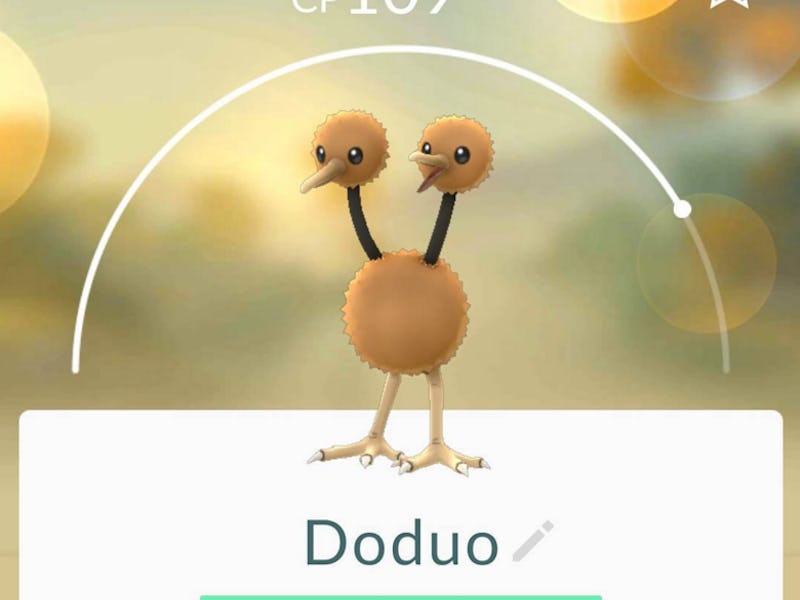The 'Pokemon Go' Doduo Is a Goddamn Biological Miracle
You've got a case of bicephalic conjoined twins from an extinct species on your hands. Catch it!

The next time you’re out on the town playing Pokémon Go and you spot yet another Doduo, pause for just a second to consider what a rare and spectacular creature you have just encountered.
Doduos are a creature not entirely imagined by Pokémon creators. They’re actually a two-headed bird from the dodo species. The dodo is a flightless bird that once roamed the island of Mauritius but went extinct before 1700; for that fact alone, spotting a live Doduo is an impressive feat.
Bicephaly, or two-headedness, is extraordinarily rare in the animal kingdom. It is not a genetic condition but an accident of fetal development — it occurs when a single zygote splits into two, which would normally result in identical twins, but the mitosis is aborted before it is complete.
Identical twins are rare, and conjoined twins are rarer still. In humans, who produce more conjoined twins than any other species, the chance of this sort of birth is one in 100,000. Conjoined twins can be joined in many different ways, and only a very small subset exhibit bicephaly.
There have been cases of bicephaly in humans, cats, cattle, pigs, goats, sheep, snakes, turtles, and crocodiles. While the two-headed eagle is a common symbol of imperial power, no such animal has ever been documented to exist IRL. The Doduo is the first confirmed example of bicephaly in a bird.
The vast majority of human conjoined twins die before or shortly after birth. But the occasional lucky ones survive to adulthood, and reproductive success is possible. Chang and Eng Bunker, born in 1811 in what is now Thailand, fathered 21 children between them after marrying sisters from North Carolina. They had nearly complete separate bodies, attached at the side and through part of the liver.
A two-headed California kingsnake.
At least one two-headed snake has survived to produce healthy offspring in captivity, although scientists assume this would be much harder to accomplish in the wild, where having two brains might make catching prey and avoiding predators harder to do. Still, the Doduo appears remarkably agile and fit for a two-headed animal; there’s no reason to suggest that it could not go on to make babies of its own, although the little ones would likely be single-headed dodos.
A Doduo is not a biological impossibility, but it is certainly, unquestionably, a goddamn miracle.